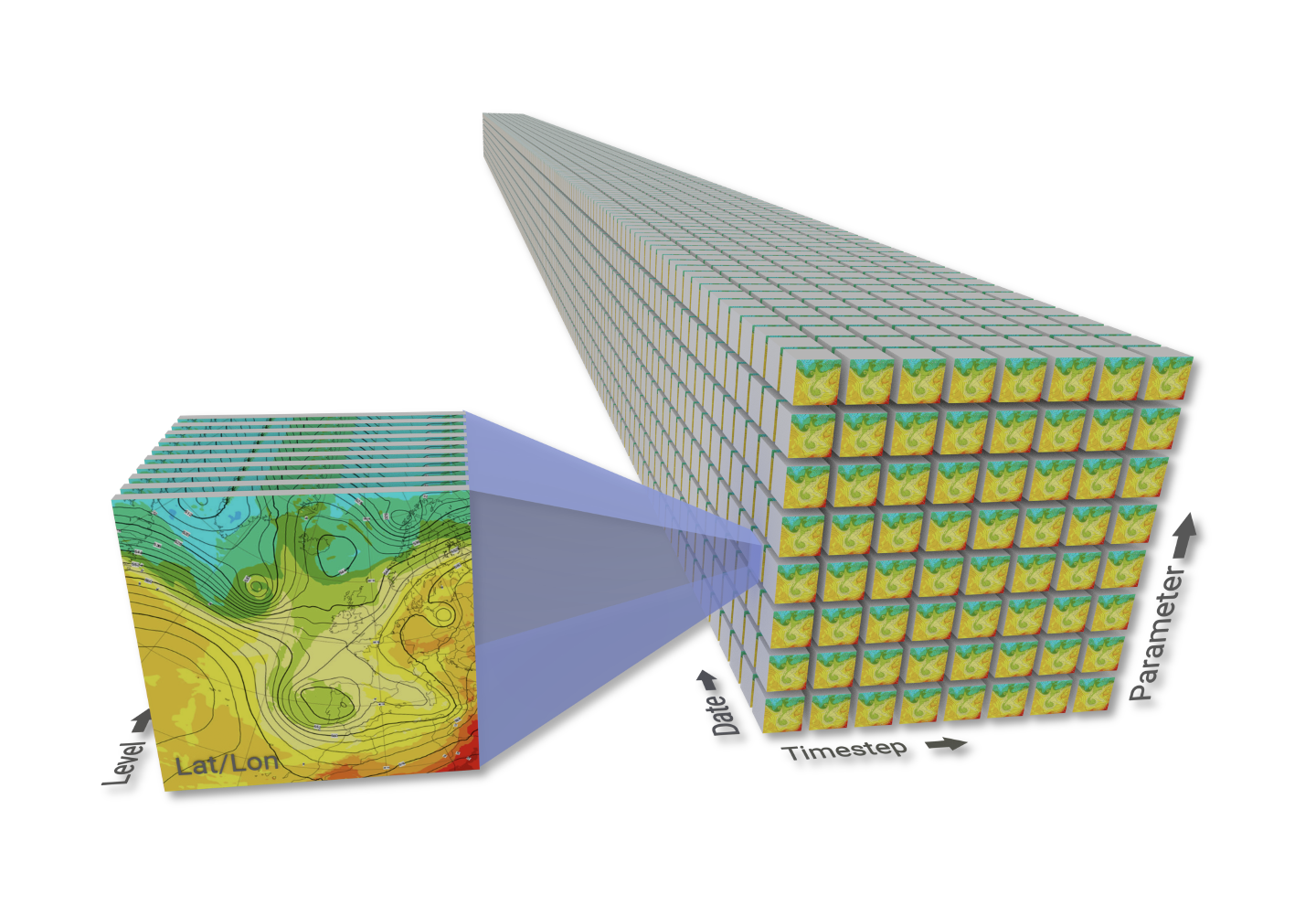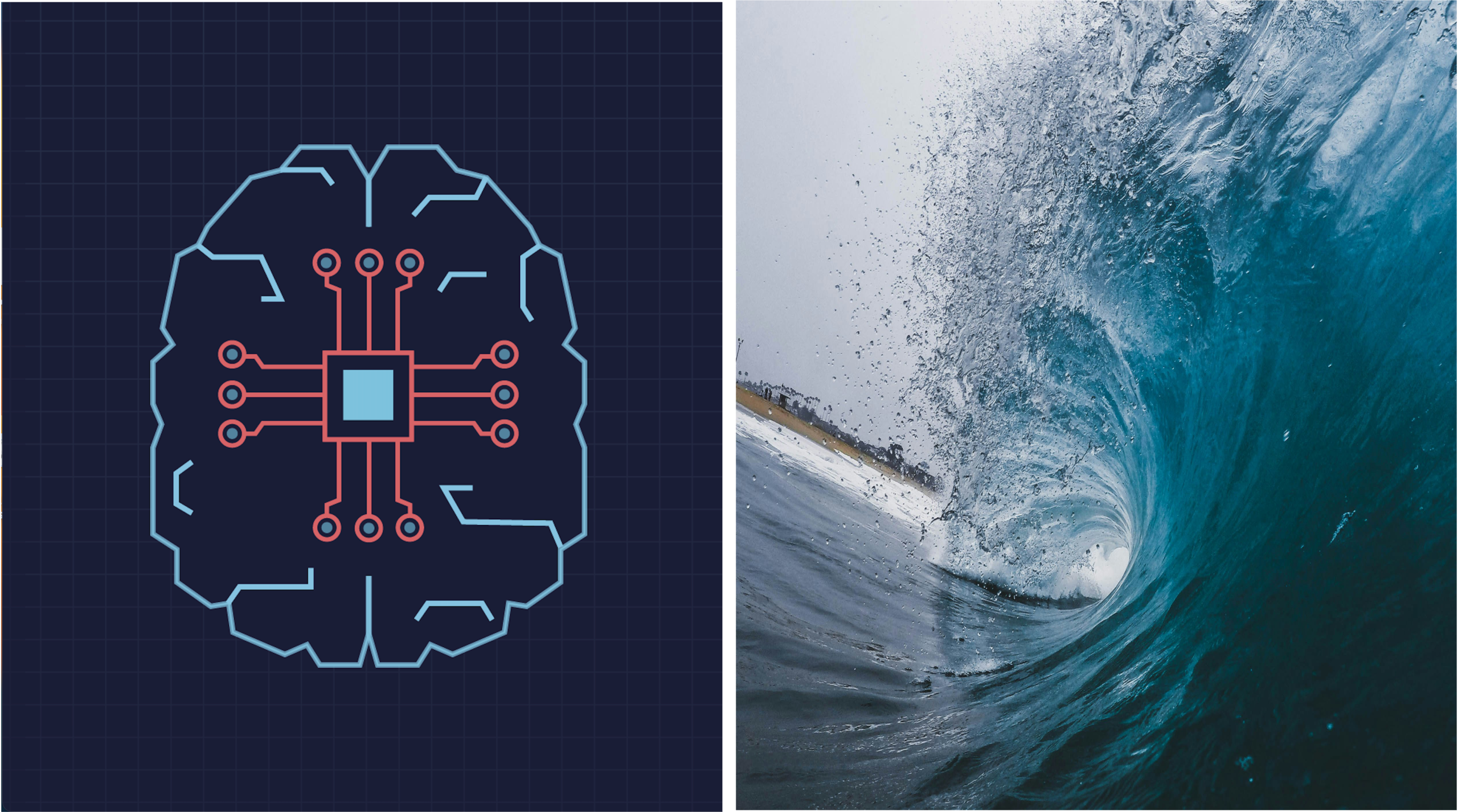
Credit: Akarat Phasura – stock.adobe.com.
Imagine being able to take a look at past extreme weather events – a record-breaking heatwave, a devastating flood – and simulate how it would unfold in a different climate. What if Paris’s 2019 heatwave had occurred in a world 2ºC warmer? How would the European flooding in September 2024 behave in a pre-industrial climate? These are no longer hypothetical questions. Scientists working on the Destination Earth (DestinE) initiative of the European Commission are using cutting-edge storyline simulations to answer them.
The Climate Change Adaptation Digital Twin (Climate DT), implemented in DestinE, is providing global kilometre-scale storyline simulations that reconstruct extreme weather events under past, present, and future climate conditions. This approach enables researchers, policymakers, local authorities and emergency responders to explore how climate change is reshaping extreme events—helping societies adapt to an increasingly volatile climate. By explicitly addressing “what if” questions, these simulations allow us to investigate alternative climate realities, enhancing our understanding of potential future risks and guiding adaptation strategies.
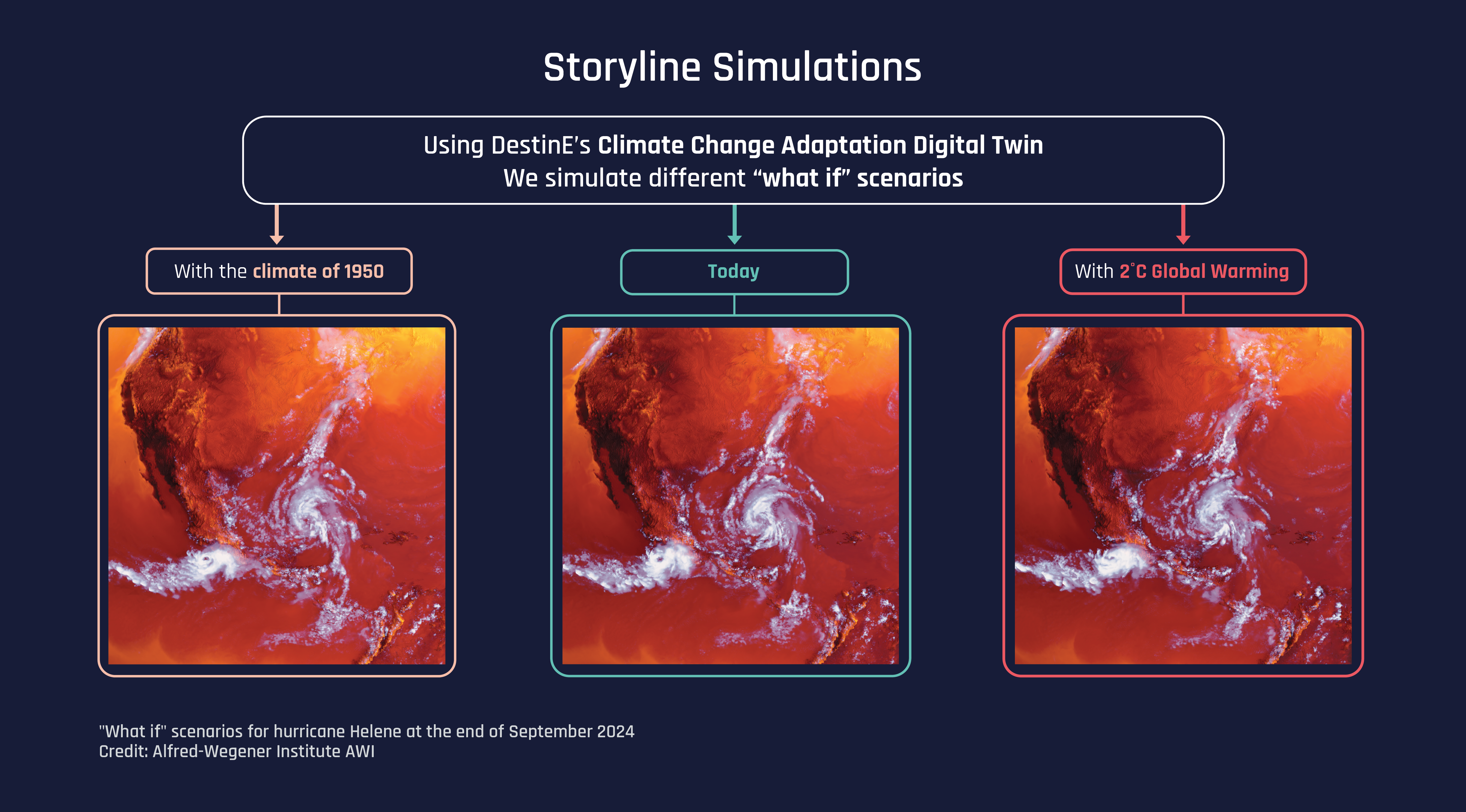
The science behind climate storylines
Augmenting approaches relying solely on statistical probabilities, storyline simulations create physically self-consistent scenarios of how specific extreme events would have played out under different climate conditions. These simulations use a combination of kilometre-scale global climate models and spectral nudging techniques to maintain realistic large-scale weather patterns while allowing fine-scale atmospheric dynamics, thermodynamic processes, the ocean, land surface and sea ice to respond to different climates.
How does it work?
The team producing the storyline simulations of the Climate DT, led by scientists from the Alfred Wegener Institute (AWI) and including ECMWF, the Barcelona Supercomputing Center (BSC), CNR-ISAC, and CSC-IT Center for Science, developed a method that combines:
- The IFS-FESOM Model – A state-of-the-art high-resolution climate model used for DestinE’s simulations.
- Spectral Nudging – A technique that aligns simulated large-scale circulation patterns with those observed (as deduced from observational products or the ERA5 reanalysis), while allowing other processes to evolve freely. This ensures that the simulated event remains physically realistic while reflecting alternative climate conditions.
By applying this approach, researchers can compare the same extreme event under different climate states, offering deeper insights into how global warming is modifying local weather extremes. These “what if” explorations help assess climate impacts in a more intuitive and decision-relevant way, shifting the focus from abstract probabilities to tangible climate futures.
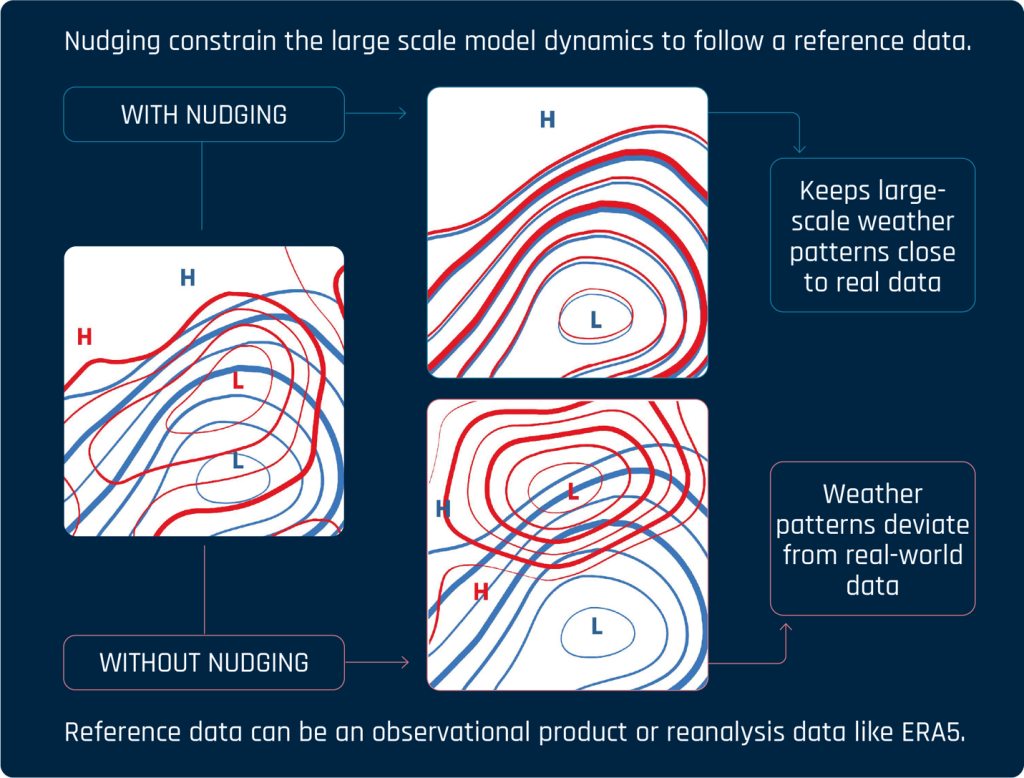
The added value of global kilometre-scale models
One of the key innovations of the DestinE Climate DT is its ability to run global kilometre-scale climate simulations. These new generation of high-resolution models allow for a more precise representation of extreme weather events and their impacts, than existing global climate models operating at coarser resolutions (of about 100 km).
Why does kilometre-scale resolution matter?
- Local granularity everywhere on the planet – Global kilometre-scale models provide detailed insights into extreme events with regional and local precision, allowing scientists to assess climate change impacts anywhere on Earth with the level of granularity needed to fully understand risks.
- Capturing small-scale weather phenomena – Fine-scale atmospheric processes, such as intense convective storms, urban heat islands, or mountain-induced precipitation, are better resolved in kilometre-scale simulations than in coarser resolution climate models.
- Better assessing the impact of climate change – By providing highly-detailed reconstructions of extreme events, these simulations offer a level of realism that is crucial for impact assessment and decision-making. This allows stakeholders to better prepare for and mitigate the consequences of climate change.
The ability to resolve these fine-scale processes globally represents a major leap forward in climate modeling, making DestinE’s Climate DT a powerful tool for assessing how recent extreme weather events might evolve in a warming world.
Unveiling the future of extreme weather
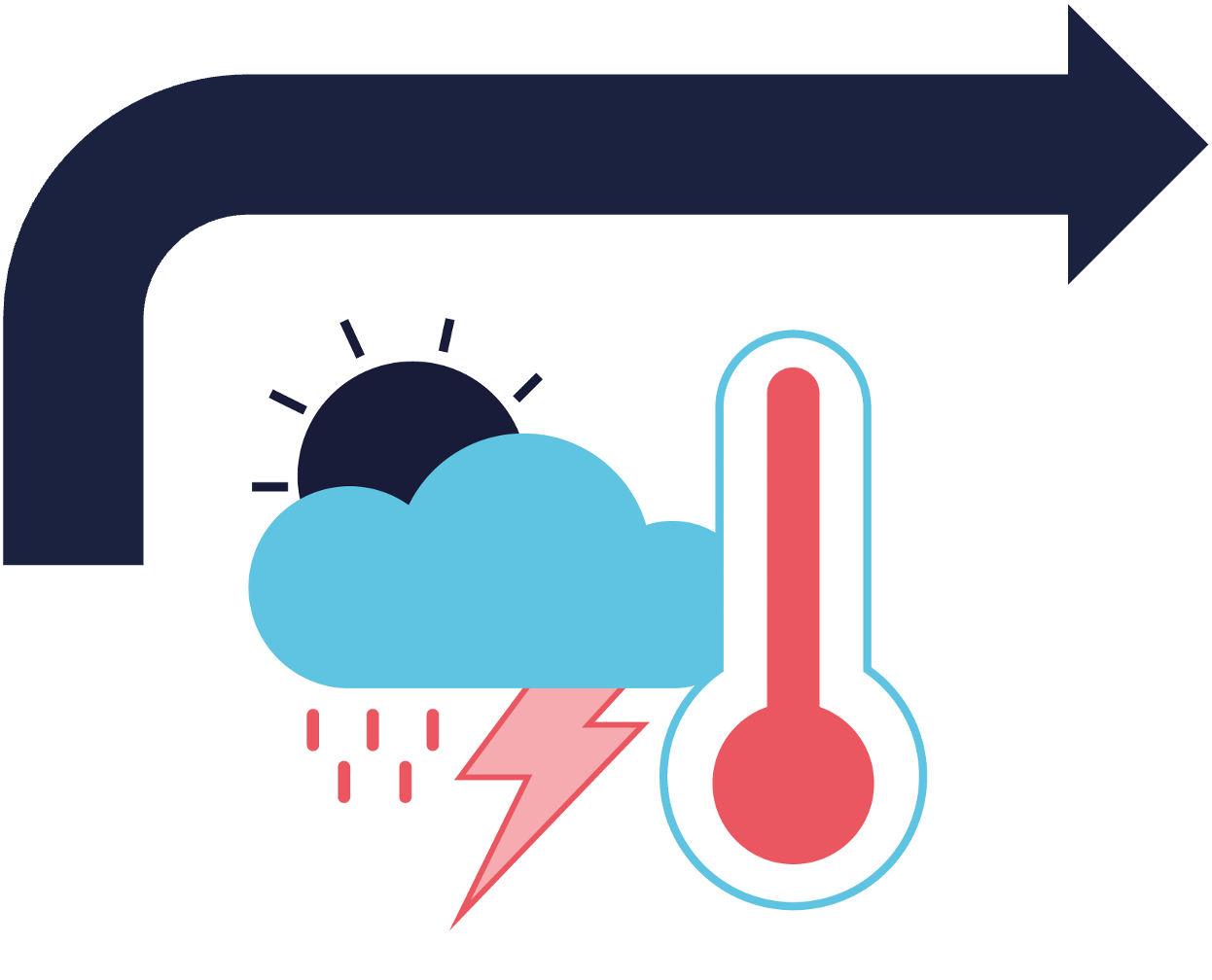
The first set of storyline simulations covers the period 2017–2024 and examines how extreme events from this period would have unfolded under three different climate conditions:
- 1950-like climate (colder pre-industrial conditions)
- Present-day climate (conditions for 2017-2024)
- A world 2°C warmer than pre-industrial levels
For example, in the case of the 2019 Paris heatwave:
- The 1950-like climate simulation reached a peak of 38.2ºC.
- The present-day climate simulation reached 40.8ºC.
- The 2ºC warmer world scenario simulation reached a temperature of 42.1ºC.
The realism of these simulations can be demonstrated by comparing the present-day climate simulation for the 2017 – 2024 period with independent observations, alongside the ERA5 reanalysis towards which it was nudged. This allows to verify the quality of the simulations and gain trust in exploiting them to understand how extreme events may unfold in different worlds. These results demonstrate the power of storyline simulations in identifying regional vulnerabilities and potential adaptation strategies.
The simulations carried out so far in the Climate DT cover all major events extreme events happening worldwide between 2017 and 2024, including heatwaves, intense storms and extreme rainfall over Europe.
Data from the Climate DT simulations, including the storyline simulations, can be accessed by registering on the DestinE Service Platform . For more details see our dedicated Climate DT page.
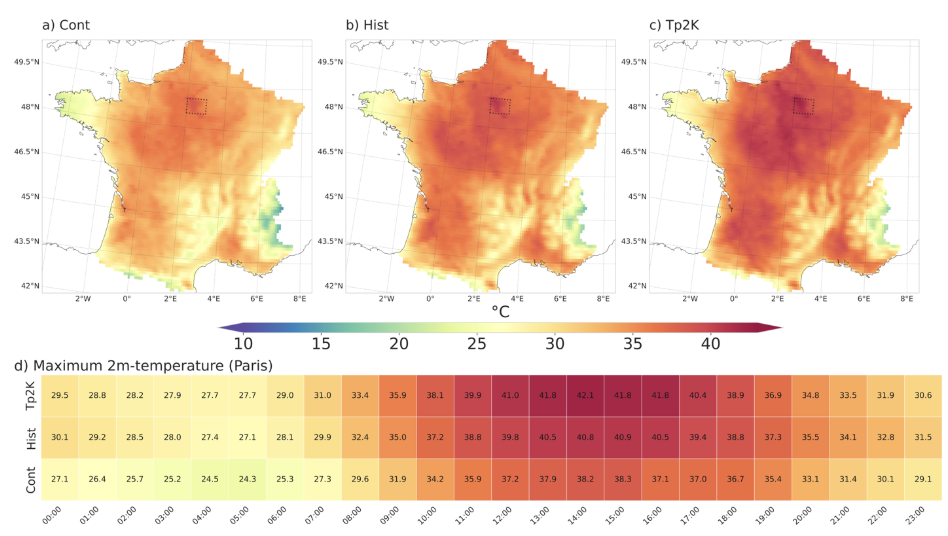
Why storyline simulations matter
Storylines provide clear, tangible insights into climate change impacts at a local scale. This makes them particularly valuable for:
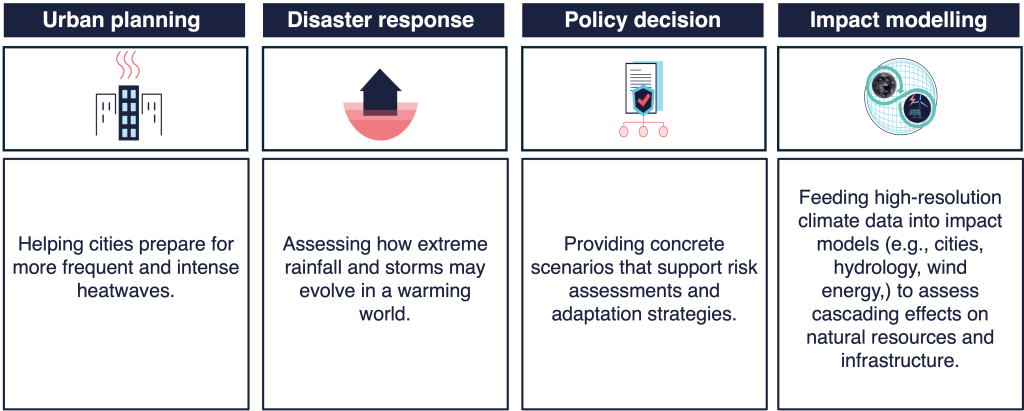
By making climate change more relatable and actionable, storyline simulations bridge the gap between scientific research and real-world decision-making. By systematically exploring “what if” scenarios, these simulations allow stakeholders to anticipate extreme weather under different climate realities and design forward-thinking responses.
Supercomputing for climate resilience
These high-resolution simulations leverage the word-class supercomputing facilities of the EuroHPC Joint Undertaking, which provides DestinE strategic access through a special access call. The DestinE storyline experiments were conducted on LUMI, Europe’s most powerful pre-exascale supercomputer, operated by CSC-IT Center for Science. This infrastructure enables the Climate DT to perform detailed climate simulations at an unprecedented resolutions.
The integration of such storyline simulations into the digital twin frameworks further enhances our ability to anticipate and mitigate the effects of climate change.
Looking ahead: The future of storyline simulations
Storyline simulations are set to become a valuable additional tool in climate science and policy. The DestinE Climate DT will continue refining this approach, expanding it to include more events, different warming scenarios, more ensemble members and enhanced regional detail. With ongoing improvements in high-resolution modelling, these simulations will provide even more granular insights into climate risks.
By enabling us to see the future of extreme weather, storyline simulations empower societies to take proactive measures—transforming climate projections into concrete action.
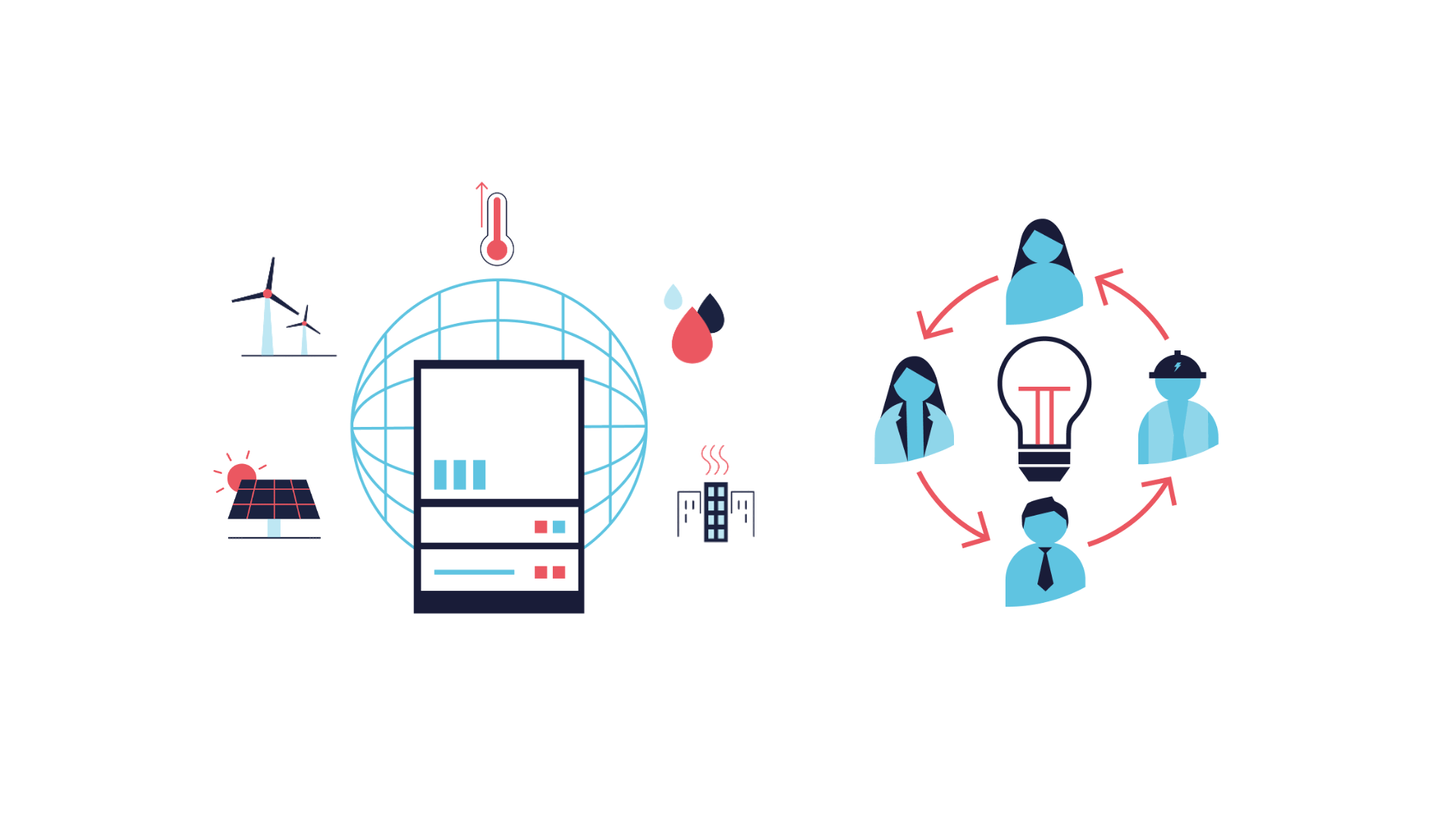
Further Reading
For more background on the storyline approach in climate science, see:
- Athanase, M., A. Sanchez-Benitez, E. Montfort, T. Jung, and H.F. Goessling, 2024: How climate change intensified storm Boris’ extreme rainfall, revealed by near-real-time storylines. Commun. Earth Environ., 5, 676 (2024). https://doi.org/10.1038/s43247-024-01847-0
- Athanase, M., A. Sanchez-Benitez, H.F. Goessling, F. Pithan, and T. Jung, 2024: Projected amplification of summer marine heatwaves in a warming Northeast Pacific Ocean. Commun. Earth Environ., 5(53). https://doi.org/10.1038/s43247-024-01212-1
- Sánchez Benítez, A., et al., 2022: The July 2019 European heatwave in a warmer climate: Storyline scenarios with a coupled model using spectral nudging. J. Climate, 35, 2372–2390. https://doi.org/10.1175/JCLI-D-21-0573.1
- Shepherd, T.G., Boyd, E., Calel, R.A. et al. Storylines: an alternative approach to representing uncertainty in physical aspects of climate change. Climatic Change 151, 555–571 (2018). https://doi.org/10.1007/s10584-018-2317-9
Credit title image: ©Akarat Phasura – stock.adobe.com.
Destination Earth is a European Union-funded initiative launched in 2022, with the aim to build a digital replica of the Earth system by 2030. The initiative is being jointly implemented under the leadership of DG CNECT by three entrusted entities: the European Centre for Medium-Range Weather Forecasts (ECMWF), responsible for the creation of the first two ‘digital twins’ and the ‘Digital Twin Engine’, the European Space Agency (ESA) responsible for building the ‘Core Service Platform’, and the European Organisation for the Exploitation of Meteorological Satellites (EUMETSAT), responsible for the creation of the ‘Data Lake’.
We acknowledge the EuroHPC Joint Undertaking for awarding this project strategic access to the EuroHPC supercomputers LUMI, hosted by CSC (Finland), and the LUMI consortium, Marenostrum5, hosted by BSC (Spain) Leonardo, hosted by Cineca (Italy) and MeluXina, hosted by LuxProvide (Luxembourg) through a EuroHPC Special Access call.
More information about Destination Earth is on the Destination Earth website and the EU Commission website.
For more information about ECMWF’s role visit ecmwf.int/DestinE
For any questions related to the role of ECMWF in Destination Earth, please use the following email links:
